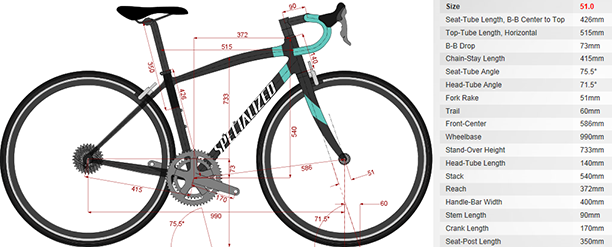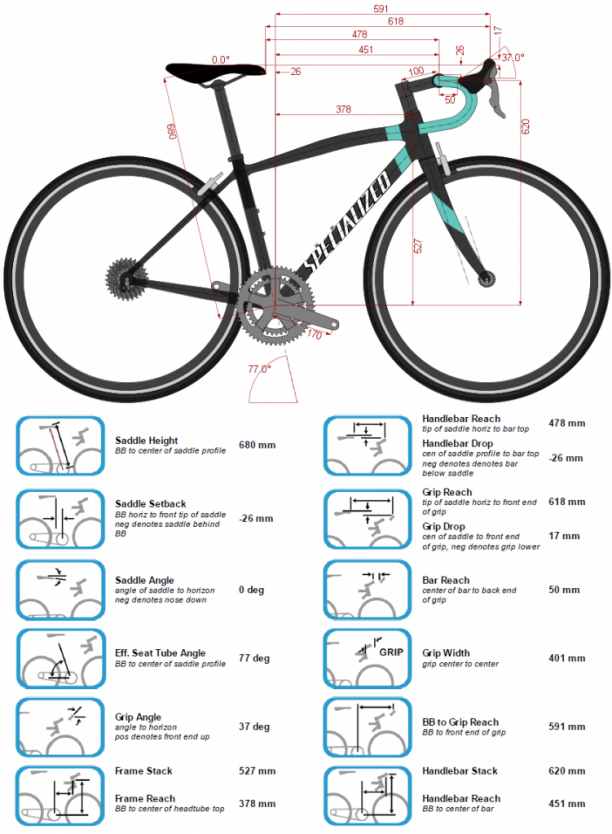I was recently asked to demonstrate how one might document a design in BikeCAD using specs from Retül. This is a common question, so I thought I would post my response here on the forum.
The sample Retül session was for a 51mm Specialized Dolce. Before looking too closely at the Retül dimensions supplied, I figured I would model a Specialized Dolce based on the frame geometry posted on the Specialized website.
Below is the BikeCAD model I developed. As you can see, the BikeCAD dimensions match the specs from the Specialized website which I've pasted alongside.
While BikeCAD will let you directly input front center, head tube length, effective top tube length, stack and reach, it will not allow you to directly enter all these dimensions at once. This is explained at: bikecad.ca/toptube_frontcenter. To ensure that all these dimensions matched the values from Specialized, I directly entered front center and head tube length and then played with fork length and tube extensions until the rest of the dimensions matched as well. Similarly, I played with the curvature of the top tube until the standover height matched the specified 733mm. To set the trail, I used the fact that trail is purely a function of fork rake, head angle and wheel diameter. Since fork rake and head angle were already supplied, I was able to adjust the wheel diameter until the trail matched the specified 60mm. From this, we know that Specialized assumed a wheel diameter of 680mm in calculating the 60mm of trail.
Once I had a satisfactory BikeCAD model of the 51mm Specialized Dolce, I had a look at the Retül measurements. Had I been using the Retül measurements to design an entirely new bike, the process would be a little different. When Retül specificies an effective seat tube angle of 77°, and a saddle setback of 26mm, one might be inclined to play with the actual seat tube angle in order to achieve these numbers. However, if we are working within the constraints of the Specialized Dolce, our seat tube angle is already set. That's not a problem though. We can still change the seatpost setback, the dimensions of the saddle itself and the position of the saddle on the rails in order to achieve the dimensions we need.
Below is the BikeCAD model after adjusting it to match the Retül measurements. Note that the Retül measurements for stack and reach are different than the published stack and reach measurements from Specialized. Since the discrepancy is very small, I'm inclined to chalk it up to slight measurement error. In the model below, I did modify the stack and reach to reflect the Retül measurements. However, everything else about the frame itself was left as is. All other modifications were done solely to components such as seatpost, saddle, headset spacers, handlebars etc. The Retül measurements are pasted below the BikeCAD model.





While I work on learning more about design I have been using BikeCad for sizing up stock bikes to my measurements. Helps me familiarize myself with the workings of the program. It's also great for transferring measurements from one bike to another. I like knowing what stem and spacers are needed beforehand.